‘I Always Have a Foot Back in Time’: Radcliffe Bailey’s New Show in a Former School Building Turns an Eye on Collective Memory
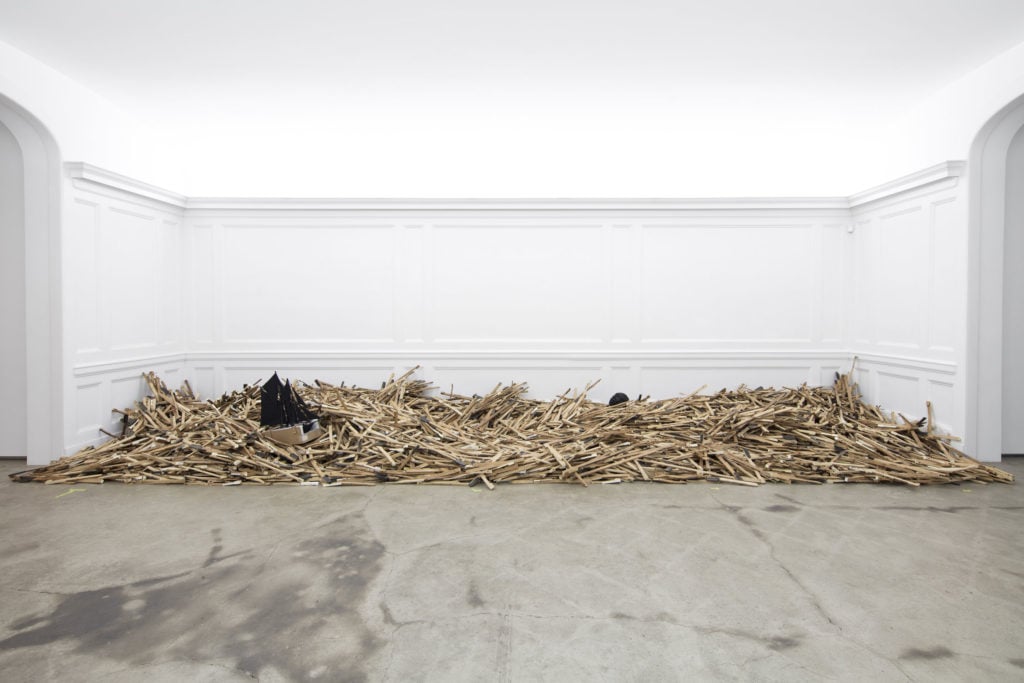

Taylor Dafoe

The School, as Jack Shainman calls his exhibition space in a former Kinderhook, New York, school building, is an unconventional place to show art. Yet it’s a fitting spot for artist Radcliffe Bailey, whose new show “Travelogue” marks the fourth anniversary of the venue. After all, much of Bailey’s work is about looking back and questioning the ideas and systems that make us who we are.
“I feel like I always have a foot back in time,” Bailey tells artnet News. “I’m constantly reminded of the past.”
An Atlanta-based artist who operates at the intersection of painting and sculpture, Bailey often incorporates found objects into his work, from old photographs to vinyl records to bottle caps. Indeed, a great deal of his practice involves traveling through his own past. Working with Shainman, Bailey’s longtime dealer, the artist revisited 16 years of work for the exhibition, which operates like a mini-survey of his impressive career.
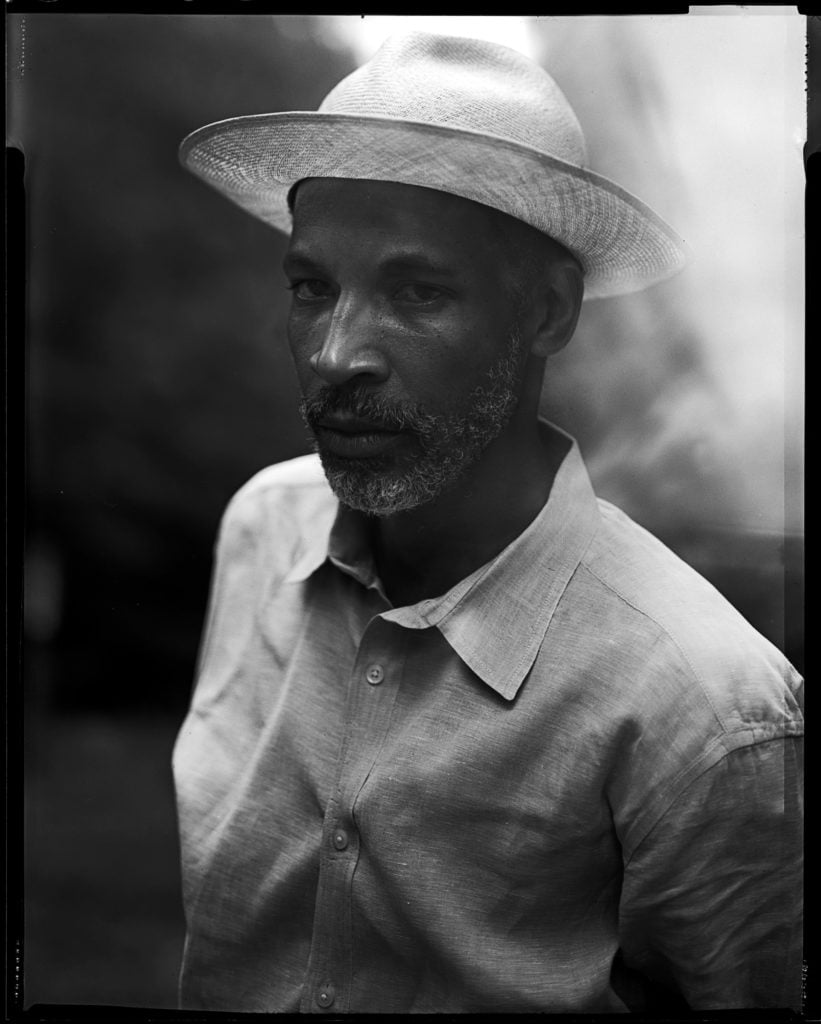
Radcliffe Bailey. Courtesy of Jack Shainman. Photo: LaMont Hamilton.
“It was interesting going through older work and looking at how things have changed,” he says. “There are parts of it that are very consistent.”
That’s apparent when looking through the works in “Travelogue.” Despite the fact that they explore the mutability of identity, historical narratives, and collective memory—and were created over a large period of time—the works feel remarkably in tune with one another, even if the noise they create is, figuratively speaking, atonal.
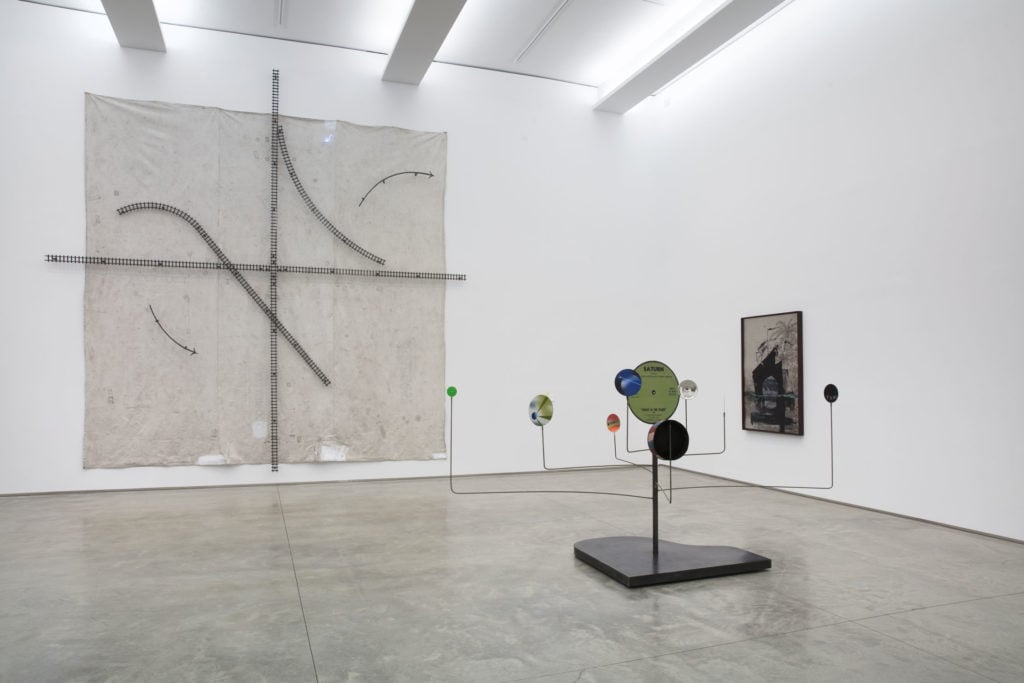
Installation view of “Travelogue,” The School, 2018. Courtesy of Jack Shainman.
“I’ve never been the kind of person who thought the world was flat,” says Bailey, referring to his proclivity for sculpture and other forms of three-dimensional work. But he could just as easily have been talking about his appreciation for the relativism of ideas. In Bailey’s world, ideas, identities, and groups of people are all perpetually in flux.
This shuffle is often complemented by the artist’s use of collage. See, for instance, the many mixed-media collages installed throughout the show. Featuring elements like found pictures of African statues, old photos of black men, sheet music, and hand-painted forms—sometimes all at once—the works hint at a symbolism that is hard to grasp.

Radcliffe Bailey, Madagascar 1 (2016). Courtesy of Jack Shainman.
The centerpiece of the exhibition is Windward Coast – West Coast Slave Trade (2009-18), a deconstructed set of piano keys that takes the shape of swelling waved on the gallery floor. Atop the splintery arrangement is a model ship and plaster bust of man, invoking the history of the Middle Passage and its influence on the contemporary diaspora.
Travel, both geographical and historical, is a theme that courses through much of the show. Trains in particular are present. They appear in the form of his sculptures constructed partly from pieces of railroad track—a link to Bailey’s father, a former railroad engineer—or through more nuanced symbols, like an oversized lantern—a reference to the Underground Railroad. (The School is also just a short trip away from the Amtrak line, which, according to the gallery, is the way most people get there from New York.)
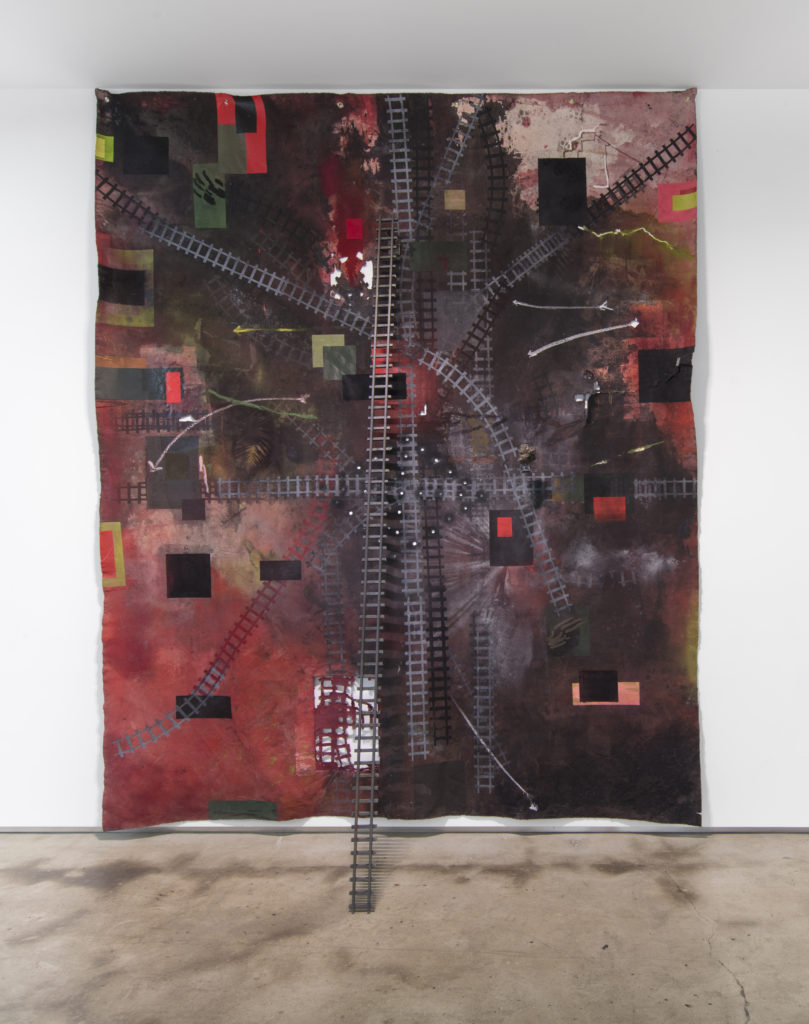
Radcliffe Bailey, Astro Black (2018). Courtesy of Jack Shainman.
Bailey’s work, dealing as it does with the formation of black identity, feels particularly salient right now. He acknowledges this, even though he struggles with the idea of being a political artist.
“I think, to a degree, people are falling asleep about what has happened,” says Bailey. “And now certain people and groups are capitalizing on those generations that are somewhat asleep, taking advantage of them and bringing back old, hateful ways. I can say that I don’t jump into politics, that I’m more fascinated with spiritual practices, but how can I not be political right now?”
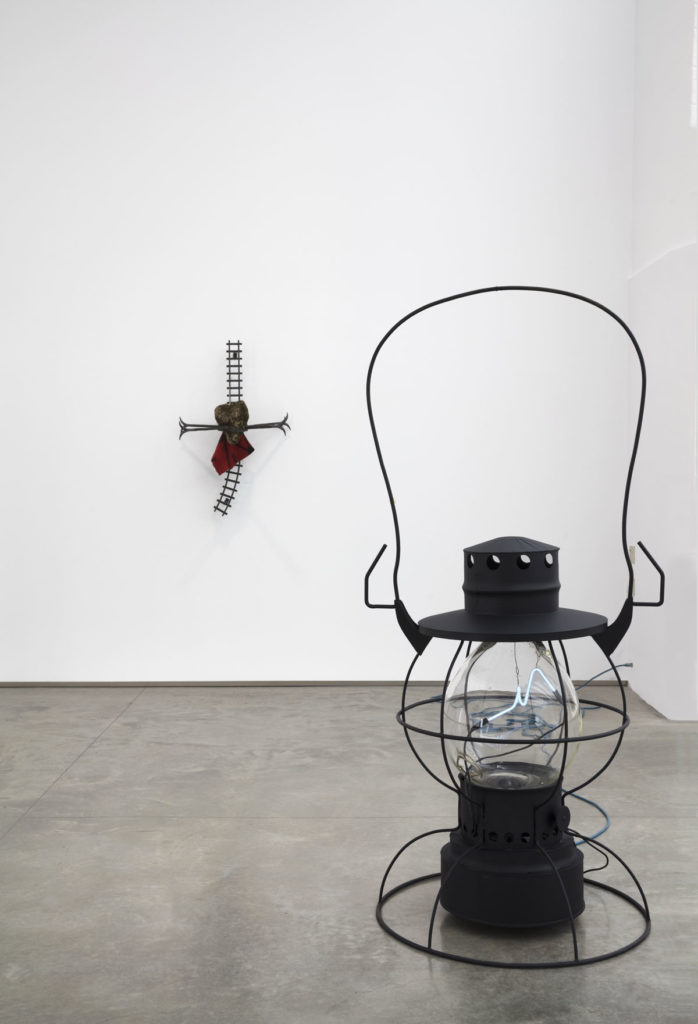
Installation view of “Travelogue,” The School, 2018. Courtesy of Jack Shainman.
In addition to works by Bailey, “Travelogue” also features work by 10 other artists, six of whom are on Shainman’s roster. Installed throughout the show—like a smaller, complementary group show within the larger exhibition—are paintings by Nina Chanel Abney, Margaret Kilgallen, and Leslie Wayne, plus sculptures by Valérie Blass and Brad Kalhamer, and photographs by Gordon Parks (the father of Bailey’s wife), among others.
“Travelogue” is on view through October 6, 2018 at the School in Kinderhook, NY.